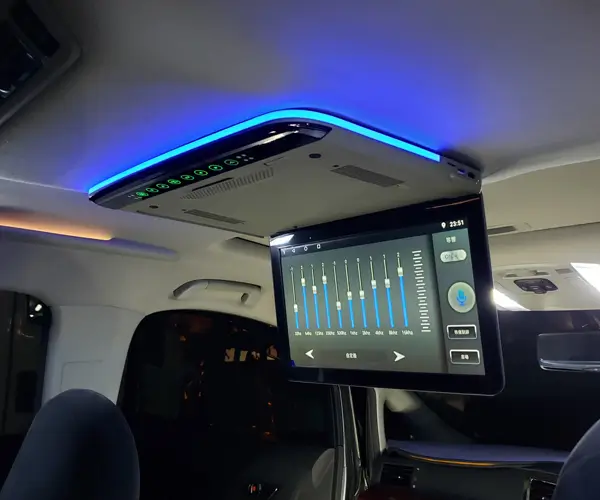Imagine a world where power meets precision, where small components orchestrate major movements with seamless efficiency. Enter the realm of the 12 volt gear reduction motor—a marvel of modern engineering that has quietly revolutionized countless industries, from robotics to automation, hobbyist projects to industrial machinery. Though seemingly modest in size, these motors pack a punch of reliability and versatility, proving that sometimes, the smallest engines can move the biggest ideas.

What exactly is a 12 volt gear reduction motor? At its core, a gear reduction motor is a direct current (DC) motor equipped with an integrated gear train that significantly reduces the motor’s rotational speed while amplifying its torque. Think of it as a sophisticated speed governor that transforms raw electrical energy into controlled, powerful motion. When powered by a standard 12-volt supply—commonly available through batteries or electrical outlets—the motor delivers dependable performance tailored for various applications.
The mechanics behind the magic A typical 12 volt gear reduction motor comprises a small DC electric motor coupled with a set of gears. The motor's magnetic fields generate rotational motion when electrical current flows through its windings. The attached gears serve a crucial purpose: they reduce the motor’s high rotational speed, often in the thousands of revolutions per minute (RPM), to a more manageable, low RPM. Simultaneously, the gear train increases torque—a measure of rotational force—making it easier to move heavy loads or perform precise adjustments.
This combination creates a balanced output—less speed but more force—perfectly suited for tasks requiring controlled movement, such as robotic arms, conveyor belts, or camera pan mechanisms. The parameters—speed, torque, and power—are finely tuned by selecting appropriate gear ratios, which typically range from 3:1 to 100:1 or more.
Advantages of using a 12 volt system The 12-volt power standard is a significant advantage, especially for portability and ease of integration. Automotive systems, battery packs, and solar power setups commonly operate at 12 volts, making these motors compatible with a wide array of power sources. Furthermore, 12V gear motors are energy-efficient, ensuring longer operation times in battery-powered projects.
Their compact size means they can be embedded into small devices without sacrificing performance. Imagine a tiny robotic rover capable of navigating uneven terrain or a compact automated window opener—all powered reliably by a 12 volt gear reduction motor.
Applications across industries The potential for 12 volt gear reduction motors extends beyond mere curiosity. They are the backbone of various cutting-edge applications:
Robotics: Precise control over joint movements and wheel drives, enabling robots to perform delicate tasks or traverse challenging terrains. Home automation: Automated curtains, smart locks, or adjustable seating—these motors make everyday life more convenient. Industrial machinery: Conveyor systems, packaging equipment, and material handling often rely on gear motors for durability and consistent performance. Hobby projects: RC cars, drones, and model trains thrive on affordable, reliable gear reduction motors that deliver real power in a compact form. Medical devices: Equipment requiring precise, repeatable movements benefit from the reliable torque output of these motors.
Why choose a gear reduction motor? Purely gearless DC motors can generate high speeds but lack the torque needed for demanding tasks. Morphing from a simple motor to a gear-enhanced version offers benefits that are hard to ignore:
Improved torque stability for lifting or moving heavy objects. Better speed control for applications requiring precise motion. Increased durability due to reduced mechanical stress at higher speeds. Greater efficiency in converting electrical energy into useful work, leading to lower power consumption.
Key considerations when selecting a 12 volt gear reduction motor While their benefits are evident, choosing the right motor involves understanding specific requirements:
Gear ratio: Determines the balance between speed and torque. Choose carefully based on your application's needs. Motor size and mounting: Ensure compatibility with your device’s physical constraints. Load capacity: Consider maximum load and operational duration. Efficiency ratings: Look for motors designed for minimal energy loss. Control options: Some motors come with integrated encoders or are compatible with different control systems like PWM (Pulse Width Modulation).
The future of 12 volt gear reduction motors Innovation continues to drive advancements in gear reduction motor technology. Trends include enhanced materials for lighter yet stronger gears, smarter integrated electronics for better speed and torque regulation, and modular designs for easier maintenance and customization.
Whether you’re building a DIY robot, designing an automated manufacturing line, or exploring new terrains with a remote-controlled vehicle, these motors open a world of possibilities. They embody the perfect marriage between power and precision, all within the accessible, familiar framework of 12 volts.
Established in 2005, Kpower has been dedicated to a professional compact motion unit manufacturer, headquartered in Dongguan, Guangdong Province, China.




































